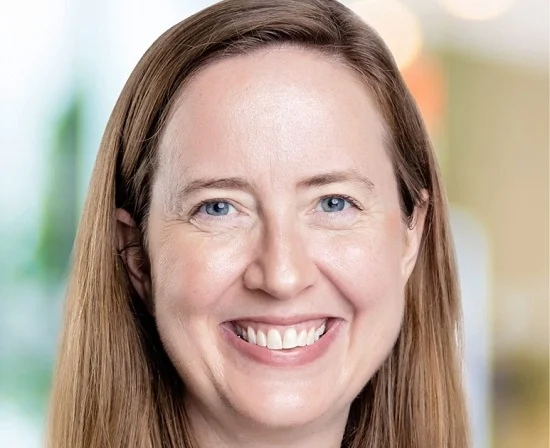BNY Mellon's Nehal Udeshi and Simon Tomlinson unlock insights
5th October, 2023 | Global Investor

Global Investor/ISF interviews BNY Mellon's Nehal Udeshi and Simon Tomlinson to gain insights into the securities lending industry from the perspective of their distinctive position within the group.
Unlocking Insights
Global Investor/ISF sits down with BNY Mellon’s Nehal Udeshi, Global Head of Securities Finance and Simon Tomlinson, Head of Agency Trading, Borrow DIRECT and Agency Cash Collateral Investment, as they share their outlook on the securities lending business from group’s unique vantage point.
This article is part of the 2023 Autumn Magazine, which can be accessed here.
Nehal, congratulations on your new role as Global Head of Securities Finance at BNY Mellon. Having been in the financial services industry for over 17 years, what is your perspective on the current securities finance and lending landscape and how does BNY Mellon’s fit in to that?
Nehal Udeshi: First, thank you. I am very proud to join a company with such rich history that continues to be at the forefront of innovation in the industry and happy to share my perspectives. 2023 has been another dynamic year for the securities finance industry, as we work our way through new capital rules, T+1 or mandatory clearing and I have every reason to expect more of the same on the forward.
But, the future is now! The regulatory landscape will continue to drive the agenda. Capital rules have brought even more attention on the cost of doing business, and focusing on how we can drive revenue given the expense of indemnification is central. There continues to be a focus on technology and automation and building further scale and value via fintech solutions, artificial intelligence and blockchain.
For BNY Mellon and the entire industry, the key to success is working together. Borrowers, lenders and market partners must continue to work together to navigate an ever-changing environment. At BNY Mellon our clients are our focus, and we believe collaboration is the best way to evolve while finding innovative solutions to address their needs.
What trends are you noting in terms of securities finance trading and where are you seeing the most opportunity for your clients?
Simon Tomlinson: Overall, I’d say 2023 has been a year of lower volatility, which is somewhat contradictory when you think on the fact, we had the regional banking crisis in March, but even then the VIX average YTD is only 17 vs 25 in 2022.
Rate uncertainty has been pervasive, so fixed income has fared well, but I would expect this to change due to expectations of a pause in the interest rate tightening cycle and the potential for easing in later 2024.
2023 has seen strong equity rallies with many indices up double digits and consequently inventory pools at Prime Brokers have been bolstered.
As equity inventory increases so does the need for more upgrade trades and that is something we are seeing more lately. The credit space has also continued to be strong from an impressive 2022 as the environment remains challenging.
On the equity side it has been a relatively good year driven by highly concentrated specials that include AMC, JNJ and Kenvue however as these names roll off and we are seeing more internalisation occurring, balances and spreads are trending lower.
Looking forward and as the interest rate cycle peaks there is a good chance that we see some improvement in the IPO landscape which has been lackluster and down significantly on the 2021 high.
For clients, and this is not new, guideline flexibility remains key and this is true probably now more than ever as collateral mobility is now faster and more dynamic.
What are your priorities for H2 2023 and going forward into 2024? What can the industry expect next from BNY Mellon?
NU: We will continue to focus on developing an even more solutionsoriented approach to assist our clients in connecting across the ecosystem, whether through financing, liquidity or collateral.
Our goal is to continue to be at the forefront on innovation to solve for clients and counterparties needs, rather than just react to them. This includes working with the CCP’s to develop meaningful solutions for scalability and cost effectiveness; and ensuring we have a robust product suite for the markets evolving needs.
There will continue to be much debate on the impact of move to T+1 in the United States and Canada, and we anticipate seeing similar proposals across the EU and UK, but it is clear the shorter settlement cycle could have an impact on the lending of assets and the risk of fails. Alongside that the US market is awaiting rules on mandatory clearing. Ensuring we are maintaining the strong partnership with our clients to navigate both is key.
What updates are you making to your technology and business processes to support this?
ST: Technology remains the cornerstone of the business and we have made material investments in this area dating back to our partnership with Trading Apps in 2012 and the subsequent purchase of the lending IP back in 2018.
There is no big bang change to our tech, but instead a consistent evolution as we add new functionality and develop innovative solutions to meet the ever-changing needs of our clients and the market. We also plan further integration of our digital trading including HQLAx and the tokenisation of assets. This is an exciting area and one that we believe can bring some meaningful efficiency, alongside an opportunity to access new pools of liquidity.


